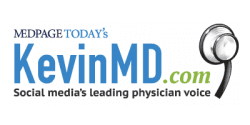Recapturing Our Humanity as Doctors
So much of what I read from the futurists is the stuff of science fiction without the humanity. We now have cellphones with facial recognition for identification (and to create effective and personal emoji’s). Artificial intelligence is being developed to gauge the emotional state associated with facial expressions, something physicians have developed over years of clinical practice. Unfortunately, that ability to look a patient in the eye, to discern if the entire story is being shared or only a synopsis of the problem, is compromised by the doctor turning to check boxes on the computer.
If there is a universal complaint I have heard from patients who see harried primary care physicians (PCP’s) it is the feeling of being disconnected from the provider of care. There may be multiple causes for this assessment, but the one most often cited by patients and by doctors alike is the documentation requirement imposed upon the medical profession. There is little face-to-face time allotted, and often the patient’s face is pointed toward the physician’s back. Hospitalists are charged with treating sick individuals they may have never seen before, sometimes managing data without doing a thorough physical exam. Since the vast majority of primary care practices are now owned by hospitals or large clinics, financial pressures require that outpatient care be the exclusive domain of the PCP while unscheduled urgent conditions be shunted to hospital-affiliated urgent care centers. The PCP, the physician best equipped to know the emotional and physical needs of the inpatient, is not only discouraged from making hospital rounds but is barred from writing orders or performing procedures that were part of a primary care physician’s skill set. Humanity and pride of purpose for physicians are sacrificed for efficiency and for the demands of payers.
If artificial means are designed to recognize patterns to predict illness, and if machine learning is to guide our care of patients, we must ensure that our patients trust us to perform properly as healers, not merely as mechanics working on a complex machine. That trust can be eroded by dependence on technology to give us answers, when in fact we need more as human beings. We are taught as physicians, first, to do no harm to our patients. But we must understand their emotional needs as well. Skill without compassion is not a formula for success, nor is it what we deserve as patients.
Working with a scribe for the last five years has allowed me to engage my patients without having to endlessly toil over a computer. I have been fortunate to work with someone who is discrete regarding the professional encounter. Patients are willing to discuss with me personal details in confidence, face to face, while the medical record is documented in the background. I dictate findings to my scribe, and then I translate to the patient the jargon I used “in plain English” when the exam is completed. I ask if there are any questions, and I answer them before I leave the room. The patient will then go to check out with printed instructions and a recommendation for a return appointment. Letters to referring doctors and primary care physicians are created on the spot. I may glance at the visit note before I sign off to ensure that the diagnostic and procedure codes are accurate, but I don’t take work home to complete documentation, as some physicians do. The salary and benefits I pay the scribe allow me to practice ophthalmology the way I was trained. Reading body language is part of that skill set for me, something I would not replace with a machine.
Having good rapport with patients is critical for determining underlying causes that adversely affect their health. Showing that we care as physicians is essential to establishing that rapport. After all, patients are checking out our body language as well.

